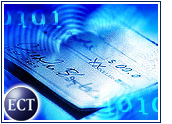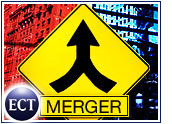
Somewhere in the zone between idea and execution, e-commerce suffers from a case of diminished returns.
Take online bill payment, for example.
At the new-idea stage, online billing was going to let every business — from dry cleaners to international investment companies — streamline their operations and offer customers a convenient way to “pay as they go.”
What could be simpler, right? You just click to a Web site, and with several keystrokes, all of your various bills are paid within just a few minutes. The site takes the funds from the account you specified, in the amounts you want, and pays your creditors instantaneously. And you get to get on with your life.
Unfortunately, somewhere along the journey from concept to reality, the convenience factor of online bill-pay got desperately lost. Moreover, a number of variables jumped in the way and discouraged consumers from climbing aboard the online billing train.
Competing Sites
I count myself in that slim majority of American consumers who do pay their bills online. Still, I have some reservations about the process.
About a year ago I started paying bills for a major credit card at the company’s Web site. Six months later I began paying most of my bills at my bank’s Web site, including the above-mentioned credit card bill.
After paying the credit card bill at the bank’s Web site for a few months, I received an e-mail from the credit card company, attempting to entice me back to the site with a promise of a US$10 credit to my account if I would pay my bill at its site six months in a row.
Kicked Out
I decided to continue paying the credit card bill at my bank’s Web site, along with my other bills. Soon I received another e-mail from the credit card company telling me my online billing privileges were being suspended due to “lack of use.”
I e-mailed the credit card company, asking it to please keep my online billing account open because I liked the convenience of reading my statement online. The company did not respond, and my online billing account was unceremoniously closed.
Hidden Costs
Meanwhile, my bank, which had aggressively courted me as an online customer, was doing a stellar job of enabling me to pay my bills online. In fact, shortly after I adopted the service, the bank offered a monthly debit service, in which every month any standing bills I had would be paid automatically, once I did an initial setup.
I appreciate the service because it pays a few bills that are exactly the same amount and due on the same day of every month. I don’t even have to think about it. However, soon I received my bank statement and found a mysterious “setup fee” tacked on to my regular charges, as well as a $6 monthly “online billing” fee.
So I contacted the bank, which directed me to its Web site, where buried deep — really, really deep — there was a page that outlined the charges.
Sweet Talk
It is worth the $6 a month to me to have the service, but my guess is that there are a lot of customers out there who are already hesitant to pay their bills online and need some nurturing to be convinced of the viability and security of the service.
To charge newbies a fee for something they already have misgivings about is probably not wise — especially when they are not told about the fee before it arrives. Customer relationship errors like that may account in part for the extremely low percentage of consumers who pay their bills online.
Bearing All
Would it not make sense for online billers and banks to bear some of the initial costs to increase their online bill-pay business?
After all, if a company can significantly reduce its paper trail and postage costs by persuading a substantial number of its customers to go electronic, the long-term benefits of selling online billing services would seem worth some up-front outlay by the biller.
As usual, the numbers tell the story. Gartner reports that of this country’s estimated 130 million Internet users, only about 3 million pay any bills online. Further, most of those who do pay online still want a paper statement sent to them via traditional mail.
Consumers have made themselves clear: they’re not ready to pay much for a service that has yet to prove itself to them.
What do you think? Let’s talk about it.![]()
Note: The opinions expressed by our columnists are their own and do not necessarily reflect the views of the E-Commerce Times or its management.
























































I AM the owner developer of two online bill paying services. I AM of the opinion that companies using online billing should bear the cost of the transaction. Two main reasons, they don’t have the paper bill cost anymore and convenience/service to their loyal customers.
My sites are designed with some thought behind them. The service MUST be FREE to customers/consumers and a single point to pay all their bills is a MUST. Both my services offer this and much more.
The rules for this message board prevent me from specifying my site names, but if more info is needed, I will be happy to provide.
Thanx
Kasaven Naicker C.E.O. VTEKKSoftware.com
There are highly integrated software packages which can meet all of the requirements set out in Gail’s email — and the right blend of CRM with financial data mining means that ‘payback’ is merely a relatively orthodox manner for justifying the cost outlay. Most cost saving systems should pay back within 3-6 months as a very broad thumb rule, but I would suggest that Value is the key — and hence the reason why the consumer may not be so keen to latch on — and why should they if they can’t see the VALUE. However, this is not to say that certain analytical B2B applications (especially where third party financial services data is required) fall under the same tarpaulin — hence value and value capture (rather than simple cost savings) are the key drivers.
I tried it all. My conclusion: Stick with checks. No automatic transactions. No electronic transactions.
The reason: It works. Your bills gets paid when you expect them to be paid. Your account gets debited when you expect it to be debited. The occasional wayward bill or check problem gets resolved easily and politely.
My experience with on-line transactions: Financial institutions dont respect you or your money. You never know how many fees are tacked on. When you do, you are AM azed at their audacity. The number of errors is incredible. None of them is in your favor. Customer service is bad. It takes 3-6 months of determination to get your money back. Somehow checks get much more respects than electrons. I will stick with them until on-line transactions are as safe and hassle free as paying by check.
I have been using online bill payment for years and recommend it to everyone who needs to get on with their life and keep their financial house in control.
I find electronic trans much much safer, last year I had a neighbor get their bills stolen out of their mailbox and the AM ount of hassle, late fees and fraudulent use of their checking account by Monday morning when the bank opened was AM azing. Paper checks are dangerous! Don’t give yours to anybody but an accredited financial institution!
The only time I ever had to track down a late posting payment it was the merchant’s slow processing, and my service went to bat for me!
Think about it, you now have a respected 3rd party with proof that the check is in the mail!
So think about that respect part and pick a good service, not a fly-by-night dot-com, and get on with life.
I keep wondering why ecommerce times doesn’t follow some emerging topics more than they do. Billing is a good example. I found out to set up our company to do online billing would initially cost us up to about $75,000. We’re a four-year-old company with a small staff. While we’re not exactly operating on a shoestring, the funds have to be carefully managed. Online billing will have to wait. And judging by what everyone says here, it seems nobody’s that interested in it anyway, from a customer standpoint.
folks- you are one lucky bunch of bankers in the states. here in singapore, all e-bills payment are free of charge.
all the banks here do not levy a charge for the use of the service
would love to charge – not $6 usd but perhaps $2 singapore dollars would do for using the service every month.
even with the FOC thing, the take up rate is slow
any one has got any ideas to share on how we can start charging fee on our customers.
the “sneaky way” of imposing fee will not do and and may result in a “mutiny”
I tried a certain credit card company’s telephone bill payment a couple of months ago — just to pay that company. It cost me $4.95 to pay by check. That was bad enough. This week I called up, after checking the web site and sighing at the extensive set-up required to make one payment a month. Well, the phone charge had DOUBLED – it’s now an incredible $9.95. No thanks. If that’s their policy for telephone payments — which saves them money! — why won’t they jack up the price for online payment whenever they want — after you’re hooked? No thanks.
People have to do their research before they jump into an online bill pay situation. I for example searched for a while before making a decision to switch my checking account from a local branch to http://www.netbank.com. Now, not only do I get an interest bearing checking account, but I also get 100% free online bill pay (they put their brand on a checkfree back end). Netbank has been absolutely wonderful! The only thing I don’t love about online bill pay is the bill pay service takes the cash from your account the day you ask to pay the bill, and it doesn’t reach the destination for between 2 and 5 days. If I wrote a paper check (which I still have the option to do), I can float the balance a few more days, and get more interest on the account. Oh well… they have to pay for the “free bill pay” somehow!
Banks/billers are from Venus and customers are from Mars … Customers think that automated channels are cheaper than branches … that’s not always so. Banks/billers think that customers value convenience enough to pay for it and that’s not always so. Customers think it’s a strange concept to be charged for access to something they already own.
Banks/billers think that customers should value security and transaction processing but have not figured out how to charge for it in a way that the customer will equate with value.
Will online bill payment really help the biller drive down A/R faster? Doubt it – I can schedule payments for the due date. Will it reduce collections? Doubt it – anyone who’s going to pay online would likely pay anyway. Will it automate their internal payment processing enough to lay off enough staff to offset cost of systems and maintenance? Doubt it. Will it reduce cost of mailing bills – sure! Enough? Is this the business justification? Then why are customers paying for it?
Where is the optimum price:sales ratio? Nobody knows yet – the pendulum is still swinging and will probably find a balance depending on what the competition charges. Will enough customers come online at that magic price to justify online billing?
Seems to me that there are more unknowns than knowns and that this is not a game for the faint of heart.